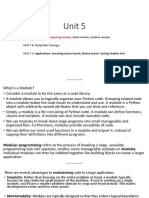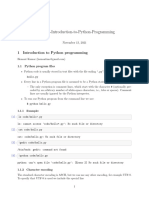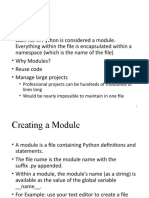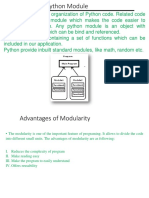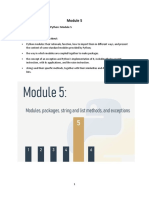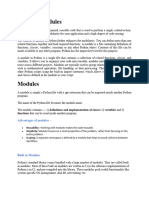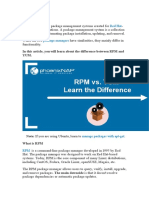0% found this document useful (0 votes)
27 views17 pagesModule1 - PCAP 31 03 - Modules and Packages - Part 1
The document provides an introduction to modules in Python, explaining what a module is and how to import and use them. It covers standard library modules, the Python packaging ecosystem, and the use of pip for package management. Additionally, it includes exercises to practice importing and using functions from the math module.
Uploaded by
mnmn10messiCopyright
© © All Rights Reserved
We take content rights seriously. If you suspect this is your content, claim it here.
Available Formats
Download as PDF, TXT or read online on Scribd
0% found this document useful (0 votes)
27 views17 pagesModule1 - PCAP 31 03 - Modules and Packages - Part 1
The document provides an introduction to modules in Python, explaining what a module is and how to import and use them. It covers standard library modules, the Python packaging ecosystem, and the use of pip for package management. Additionally, it includes exercises to practice importing and using functions from the math module.
Uploaded by
mnmn10messiCopyright
© © All Rights Reserved
We take content rights seriously. If you suspect this is your content, claim it here.
Available Formats
Download as PDF, TXT or read online on Scribd
/ 17




















